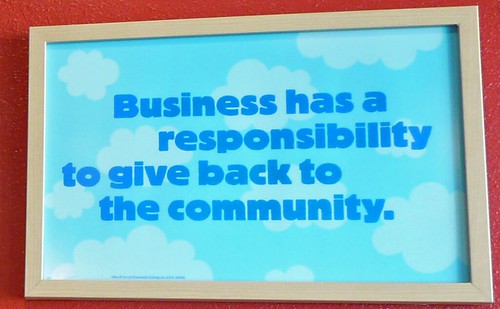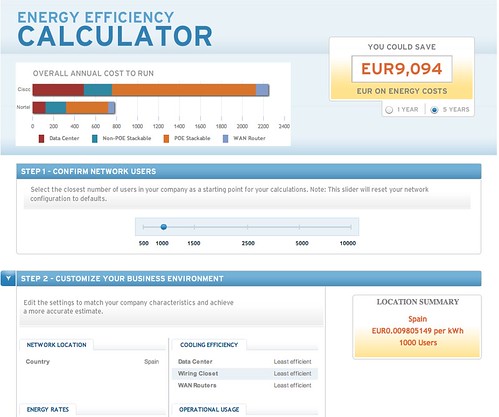As mentioned previously, buildings account for 38% of CO2 emissions in the United States, buildings consume 70% of the electricity load in the U.S and CO2 emissions from buildings are projected to grow faster than any other sector over the next 25 years.
Cisco has decided to tackle this problem, by turning its networking infrastructure kit into a platform for energy efficiency with its launch yesterday of Cisco EnergyWise!
Cisco EnergyWise is a technology for their Catalyst line of Switches which will be rolled out as a free software upgrade for existing switches and included in new Catalyst switches beginning in February 2009.
From the release:
Cisco EnergyWise will roll out in three phases to improve IT and building system energy utilization:
- · In the first phase (February 2009), Network Control, Cisco EnergyWise will be supported on Catalyst switches and manage the energy consumption of IP devices such as phones, video surveillance cameras and wireless access points.
- · In the next phase (Summer 2009), IT Control, there will be expanded industry support of EnergyWise on devices such as personal computers (PCs), laptops and printers.
- · In the final phase (Early 2010), Building Control, Cisco EnergyWise will be extended to the management of building system assets such as heating, ventilation and air conditioning (HVAC), elevators, lights, employee badge access systems, fire alarm systems and security systems
EnergyWise will allow companies to create event-based policies for energy reduction (i.e. turn off all lights in data center or hotel room unless someone swipes in – and turn off when they swipe out). It will also allow for control of the energy utilisation of everything from wireless access points, right the way up to building’s aircon systems. Policies can be grouped by tags, so you can control entire buildings campuses or geographies.
Cisco also announced the acquisition of Richards-Zeta Building Intelligence Inc. to get access to the intelligent middleware to provide interoperability and integration between building infrastructure, IT applications and Cisco EnergyWise.
EnergyWise will also enable companies to report aggregated power consumption across an organisation, provide reports of current power conditions and suggests potential changes thereby reducing energy costs and greenhouse gas emissions.
Demand response programs will benefit hugely from systems like this being in place.
Superb to see RedMonk client company SolarWinds being signed up as the first network management partner for the program. SolarWinds told me they hope to have the integration with Cisco EnergyWise complete in 2009 and they told me that:
- · EnergyWise policies and configurations will be managed by Orion Network Configuration Manager (NCM).
- · Orion Network Performance Monitor (NPM) will show EnergyWise statistics and reports in its familiar web-based dashboard.
- · We will also establish EnergyWise forums in thwack, to help support users as they roll out EnergyWise in their corporate environments.
Now, how long will it be before Juniper come out with a competitive offering, do you think? The more companies thinking this way and turning out products like this, the better for everyone.


